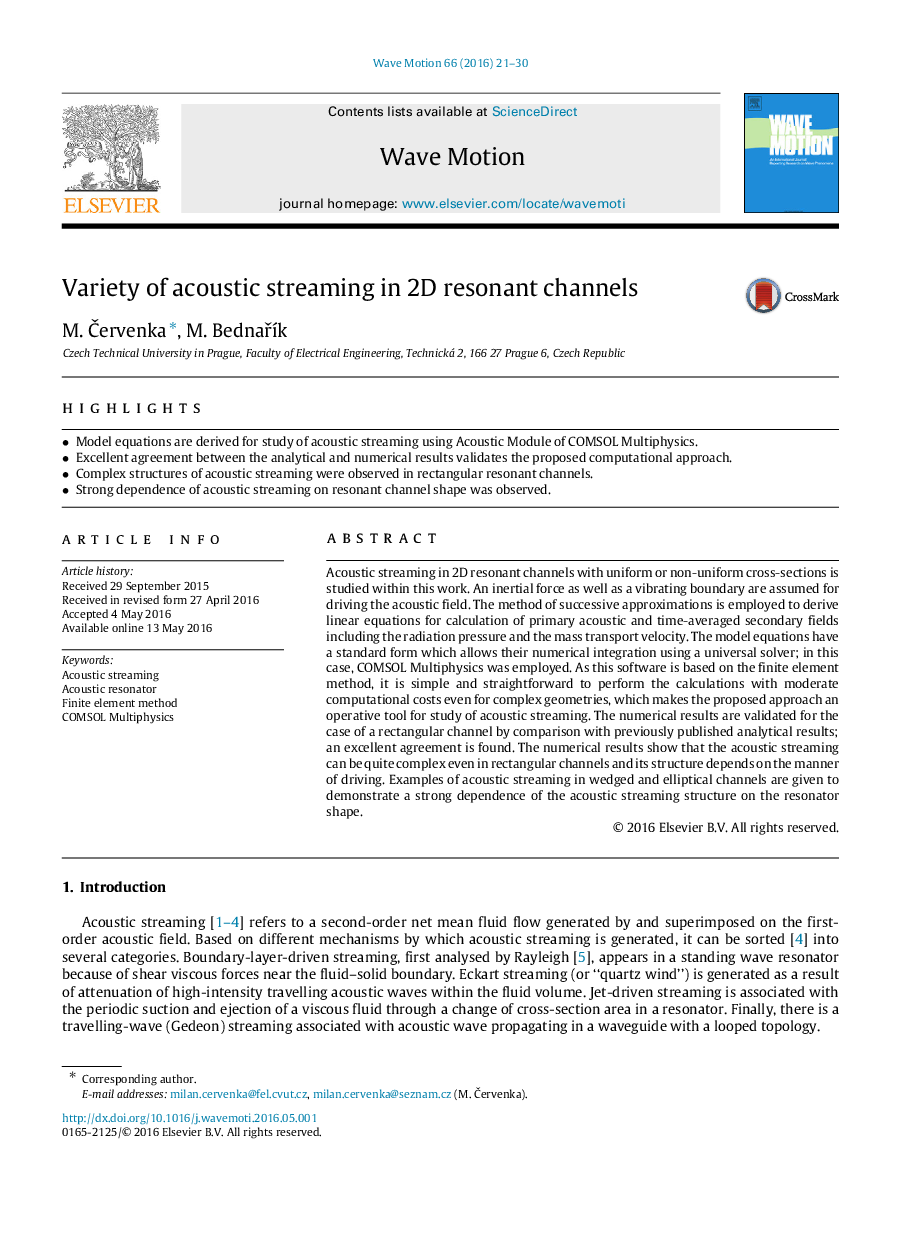| Article ID | Journal | Published Year | Pages | File Type |
|---|---|---|---|---|
| 1901228 | Wave Motion | 2016 | 10 Pages |
Abstract
Acoustic streaming in 2D resonant channels with uniform or non-uniform cross-sections is studied within this work. An inertial force as well as a vibrating boundary are assumed for driving the acoustic field. The method of successive approximations is employed to derive linear equations for calculation of primary acoustic and time-averaged secondary fields including the radiation pressure and the mass transport velocity. The model equations have a standard form which allows their numerical integration using a universal solver; in this case, COMSOL Multiphysics was employed. As this software is based on the finite element method, it is simple and straightforward to perform the calculations with moderate computational costs even for complex geometries, which makes the proposed approach an operative tool for study of acoustic streaming. The numerical results are validated for the case of a rectangular channel by comparison with previously published analytical results; an excellent agreement is found. The numerical results show that the acoustic streaming can be quite complex even in rectangular channels and its structure depends on the manner of driving. Examples of acoustic streaming in wedged and elliptical channels are given to demonstrate a strong dependence of the acoustic streaming structure on the resonator shape.
Related Topics
Physical Sciences and Engineering
Earth and Planetary Sciences
Geology
Authors
M. Äervenka, M. BednaÅÃk,
